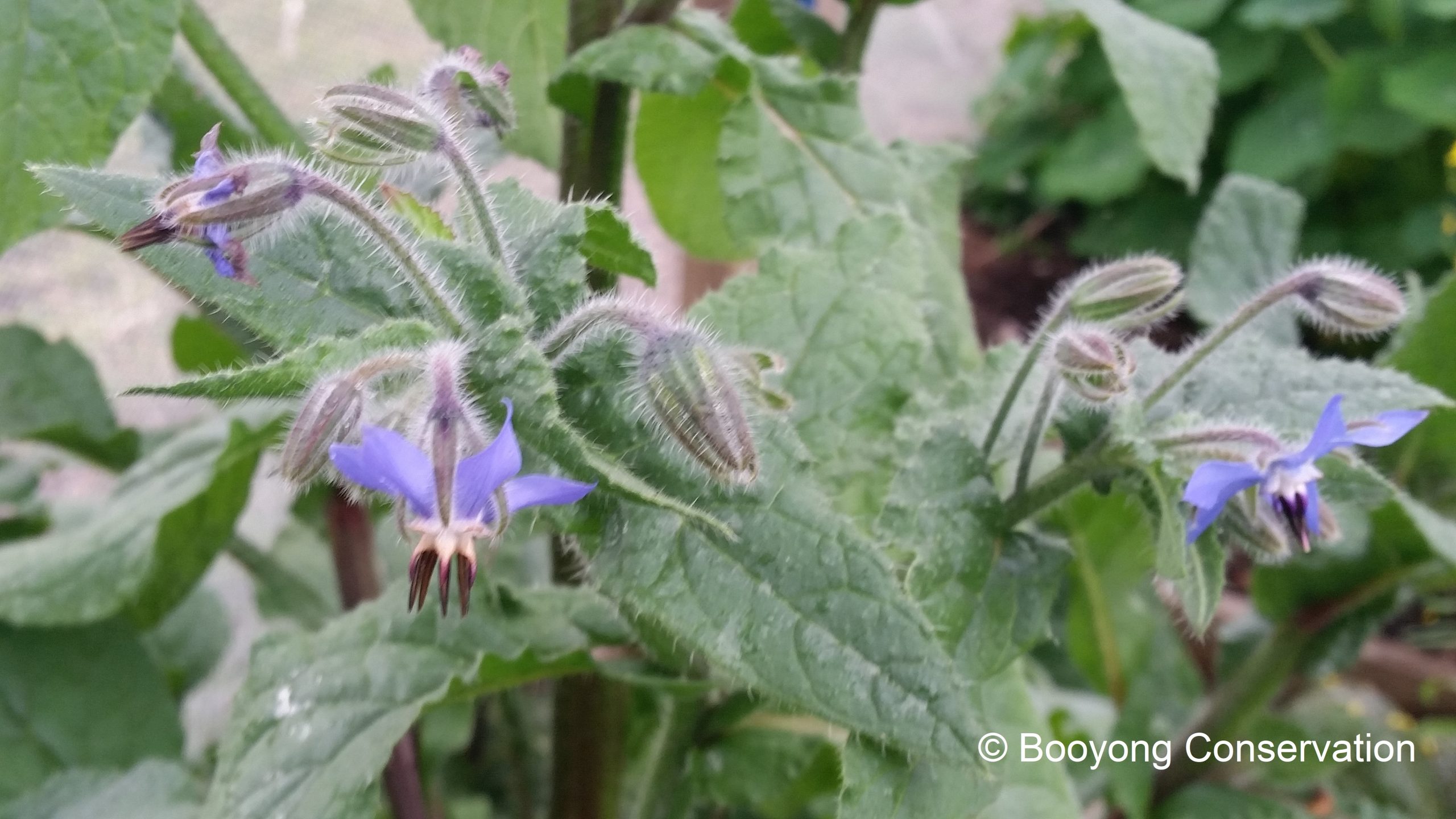After several attempts, we have finally had success growing Borage at Booyong. The poly tunnel and netting are what helped get us over the line, in previous attempts the little marsupials and native animals we love and protect annihilated our little seedlings, every time we planted them.
Now that we have them, they say you have them for life. However, I believe our next challenge will be to allow the bees better access to the beautiful blue flowers that they love. We’ve found when we’re at the farm they love it if we remove the poly tunnel netting during the day so they have access. We will also try growing them in and around the fruit trees and have some growing in our herb spiral that is protected and they have access too.
Growing – Borage is an annual that is suitable for a herb, vegetable or orchard garden and is apparently easy to grow and once established tolerable to dry conditions and will self-seed each year.
 Borage has oval and hairy leaves (which can irritate sensitive skin) and prefers well-drained soil in which it will grow up to 1 metre high, which makes them a great protector of more shade loving plants. It is best planted in full sun to semi shade, in groups as it can be a bit straggly and benefits from other plants to support it.
Borage has oval and hairy leaves (which can irritate sensitive skin) and prefers well-drained soil in which it will grow up to 1 metre high, which makes them a great protector of more shade loving plants. It is best planted in full sun to semi shade, in groups as it can be a bit straggly and benefits from other plants to support it.
They have a large tap root that makes them unsuitable for pots as they develop, they need room to grow.
Borage star like flowers are present in the garden now in Winter at Booyong.
Care – They like to be fed lots of organic matter to grow best.
Pruning – Borage adds trace minerals to the soil it is planted in and is good to chop and drop in your garden and to add to your composting.
The more you remove dead flower heads, the more blooms you will have.
Companion Planting – Borage attracts beneficial bees, butterflies and insects and can be grown near citrus, pears, and avocado trees. They attract bees, hoverflies and wasps to your strawberries, brassicas, legumes and tomatoes and will increase the yield of your fruit and vegetables and the wasps will control other less beneficial pests in your garden.
According to Jackie French Guide to Companion planting – borage plants bring up calcium and potassium from the soil and as the leaves decay, these minerals are made available to its companion plants.
Borage is said to deter tomato hornworms and cabbage worms in the garden.
Honeybees also love the sweet nectar of borage flowers and it is said to add a subtle and delicious flavour to domestic honey.
Pests and Diseases – Pest and disease free, possibly due to the hairy leaves.
Harvest – Harvest leaves and flowers all year round as required, leaves can be used fresh or dried and flowers have many uses. Roots are not edible.
Propagation – When growing from seed place 1 cm deep and cover them lightly with soil and keep well-watered, doing so directly into the garden in Spring or early Autumn.
Borage will self-seed and reappear each year once established and are extremely easy to remove from your garden. If you do not want this to happen, remove the seeds when the flowers start to turn brown and don’t forget to share with friends and neighbours.
Every garden should have borage, our bees need flowers to stay alive.

You must be logged in to post a comment.